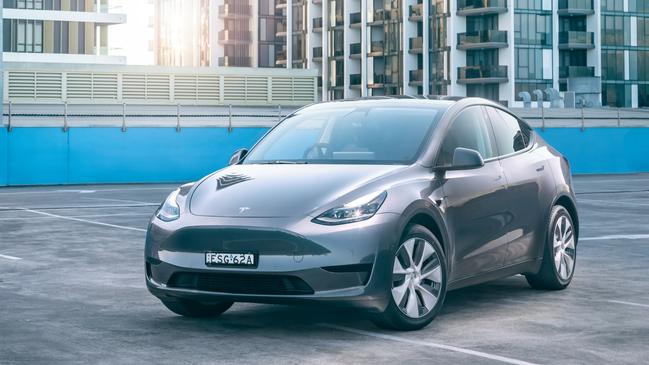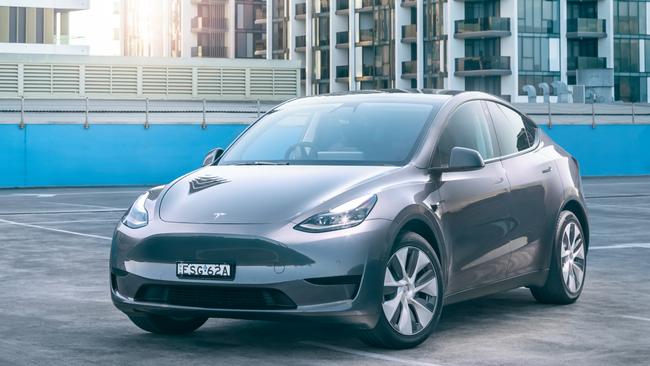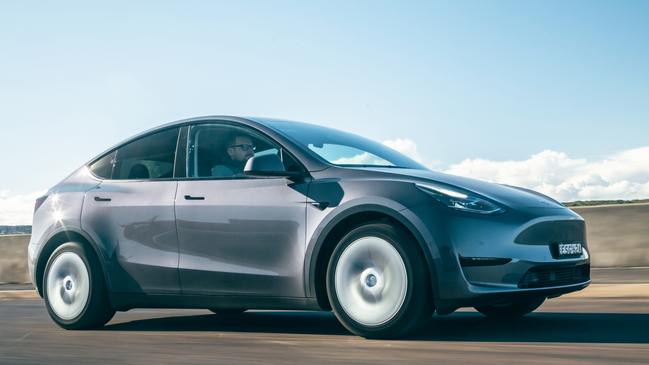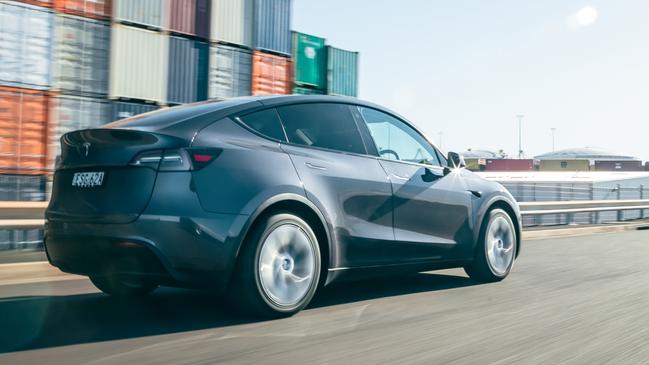Tesla boss says EVs could revive the local car industry in Australia
Electric vehicles provide a huge opportunity for Australia to cash in on our abundance of minerals critical to the production of batteries, argues Tesla Chair Robyn Denholm.

Motoring News
Don't miss out on the headlines from Motoring News. Followed categories will be added to My News.
The electric vehicle revolution is an achievable first step on the road to a clean, green and affordable Aussie lifestyle
Like most people, I want my grandkids to grow up in an Australia where they don’t have to worry about things like “poor air quality” and “water pollutant monitoring”. I also want them to grow up with affordable electricity and with the prospect of great jobs.
I’d wager most Mums and Dads around the country would feel the same way.
At the recent federal election, it was clear that most voters want their elected representatives to lock in energy security with sustainable, renewable and affordable electricity. One of the most important steps that we can take right now is the introduction of meaningful emissions standards for our vehicles.

Currently, transport accounts for about 20 per cent of Australia’s emissions and it is rising.
Increasing the number of electric vehicles on our roads will offer Australia a chance to lower emissions.
Even more importantly the transition to renewable energy and Electric vehicles is also one of the greatest economic opportunities for Australia this century.
Having grown up in the south western suburbs of Sydney and being the daughter of petrol station owners, to today chairing the world’s largest electric vehicle company, I believe that this transition is not only possible, but also in the best interest of all Australians.
Unfortunately, Australia is starting from a fair way behind. Only two per cent of new car sales in Australia are electric; in the UK and Europe it’s well over 10 per cent.
This week the average Australian fuel bill hit $100 a week. For the first time ever, the average family is spending over $5000 a year on petrol. Our cars don’t have to be this polluting, or this expensive to run.

Many Australians don’t realise that the new petrol vehicles on offer here are much less efficient than the models available overseas. Over the last decade most other developed countries implemented new vehicle standards requiring carmakers to improve the efficiency of new cars. Australia didn’t. As a result, our petrol bills are 30 per cent higher and among the most polluting in the world.
New vehicle standards don’t affect existing or used vehicles. They mean that carmakers can still sell all the same vehicles, but over time they must introduce more efficient engines, hybrids and electric vehicles to reduce overall pollution from their cars and ensure Australian motorists get access to the same new technology as other countries.
In some vehicle categories it will take a few years for hybrid and electric options to be available. Drivers will still be able to buy new petrol and diesel cars, trucks and utes. Over the next ten years, their options in each category will get more efficient. More efficient vehicles mean lower petrol bills and lower emissions.

So, what’s it going to take to rev up the EV market here in Australia?
The good news is we know it’s possible. Looking across the ditch to New Zealand there is an incredible effort afoot with our neighbours to deliver a new EV future.
A year ago, they were in a very similar position to Australia. But in the last year they have gone from 2.5 per cent of new vehicles being electric to 11 per cent. The average emissions of their new vehicles have dropped by 14 per cent in just one year. There’s no reason Australia can’t do the same. The USA, China, Japan, South Korea, Canada and the UK have all taken action.
No country has more to gain from the world moving to electric vehicles than Australia. We can be a renewable energy superpower. Australia is one of the few countries in the world with all the critical minerals required for lithium-ion batteries.

Electric vehicles run on lithium-ion batteries and last year 70 per cent of the lithium in Tesla’s batteries came from Australia. Tesla alone spends $1 billion a year on Australian minerals. However, Australia is missing out on much of the value-add from this supply chain because, to date, the focus has been on shipping the raw materials offshore.
Here in my home state of NSW, we have some of the richest deposits of lithium, cobalt, zinc, copper, gold and rare earths.
Australia should aim to do the refining, the battery cell manufacturing and the vehicle manufacturing. We can and should do all of that.
I once worked at Toyota when cars were still made in Australia and I believe Australia can have an even bigger car industry in the electric age.
The question is whether or not we will take the necessary steps to move further up the value chain, including more refining and large-scale cell manufacturing.
We have the know-how, we have the skills and an abundance of mineral resources.
Let’s seize the opportunity.
Robyn Denholm is the Chair of Tesla


